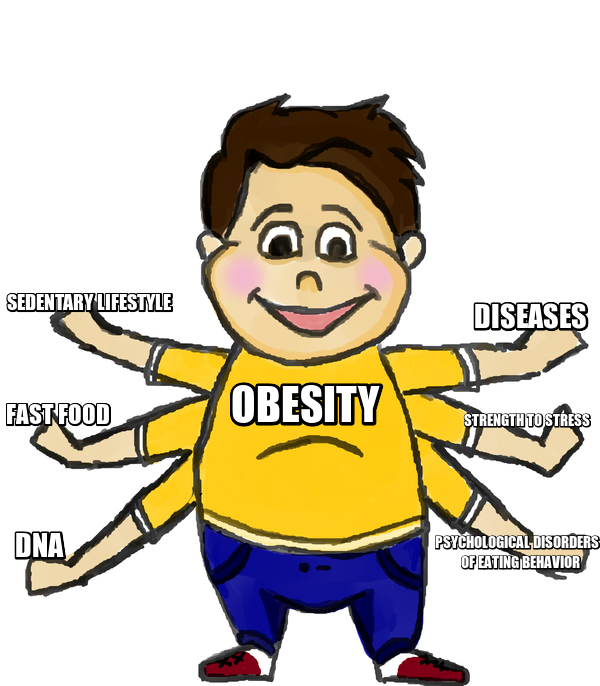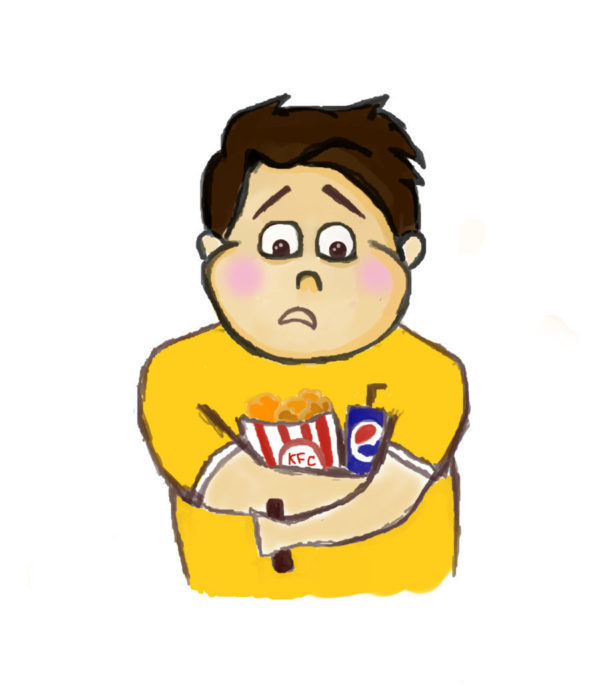Health is one of the most important human values, a pledge of its well-being and longevity, but often there are factors that do not always depend on us – pathological diseases inherited, diseases at birth and many other troubles of the 21st century.
The problem of teenage obesity plays a big role around the world. Studying this issue better important because of large number of man’s complexities begin with insults in the direction of his appearance and weight which can greatly affect his psyche and future life. Teenagers take insults to heart, and it can be a turning point for them. Therefore it’s significant to find out how to deal with teenage obesity.
By studying Internet resources and communicating with a nutritionist in the interview format, all of us came to some conclusions that were generally known, but people did not focus on them. This article will contribute to the general field of research in the field of adolescent health.
To begin with, it is of importance to define what obesity means. Obesity, also called corpulence or fatness, is an excessive accumulation of body fat, usually caused by the consumption of more calories than the body can use. The excess calories are then stored as fat or adipose tissue. Overweight, if moderate, is not necessarily obesity, particularly in muscular or large-boned individuals.
To identify whether you have the obesity or not is easy. If a person’s bodyweight is at least 20% higher than it should be, person is considered to be obese. If your Body Mass index is between 25 and 30 you are considered to be overweight (see Table 1 and 2)
The formula for BMI was devised in the 1830s by Belgian mathematician Adolphe Quetelet. BMI is universally expressed in kg/m2. If imperial units are used (pounds and inches) then an additional conversion factor is applied.
The first formula we have listed below is the metric formula, using kilograms and meters. The second one is the English imperial formula, which uses units of pounds and inches.
| Metric BMI Formula
BMI = weight (kg) ÷ height2 (m2) |
Imperial BMI Formula
BMI = weight (lb) ÷ height2 (in2) × 703 |
Table 1
| BMI | BMI CATEGORY |
| Less than 15 | Very severely underweight |
| Between 15 and 16 | Severely underweight |
| Between 16 and 18.5 | Underweight |
| Between 18.5 and 25 | Normal (healthy weight) |
| Between 25 and 30 | Overweight |
| Between 30 and 35 | Moderately obese |
| Between 35 and 40 | Severely obese |
| Over 40 | Very severely obese |
Table 2
http://www.thecalculatorsite.com/articles/health/bmi-formula-for-bmi-calculations.php
(Robert George, 2017).
The biology of food intake is very complex, involving olfaction (smell), taste, texture, temperature, cognitive and emotional responses and metabolic/autonomic information which signals the brain to initiate or cease eating. Recent scientific studies have identified several substances that act on the brain to signal a need for an increase in food intake. Likewise, several substances have been identified that signal the brain to decrease food intake (Obesity Society, 2016).
Obesity is a growing global health problem. The World Health Organization predicts that by 2015 the number of people who are obese and overweight will be at least 3 billion people. Specialists are particularly concerned that the number of children and adolescents affected by this disease is steadily increasing (Bekirova, 2010).
Typically, obesity is a result of over-eating, unhealthy diets, lack of enough exercises. In our modern world with increasingly high calorie food as a «junk food», cafe food that contains salt, sugar, fat and starches combined with our inconstant lifestyles, modern urbanization and changing models of transportation, there is no wonder that obesity has rapidly increased in the last few decades around the whole world (Suzanne Bennett Johnson, 2012).
As it turned out, in Kazakhstan the situation with such diseases is far from the best, and traditionally the participants appealed to the state help in solving this problem. Among the causes of chronic diseases in Kazakhstan, 87.5 percent of the cases are identified as four major risk factors: unhealthy diet, insufficient physical activity, tobacco use and excessive alcohol consumption. Here you can also include drug addiction, the rampant of which is gaining momentum (Malchenko, 2017).
According to the National Center for Healthy Lifestyles , children with overweight and obesity tend to develop chronic non-infectious diseases in adulthood which, accordingly, increases the risk of premature death
The results of the epidemiological study are expected to identify the leading risk factors and the prevalence of obesity among children of primary school age.
The results of the study will make it possible to develop a set of interpectoral measures to improve the health and wellbeing of children aged 11-15 and measures for the prevention of obesity among children aged 6-9 at both the regional and state levels, and to develop and implement modern organizational technologies at the level of the school community, aimed at developing resistance to risky behavior, psychoemotional disorders among children aged 11-15 (“The problem of childhood obesity…”, 2014). (TengriNews, 2014). 
We can conclude that the problem of obesity among teenagers is really relevant and very dangerous as well as among children. With questions of obesity, specialists – dietitian, prescribing a course of treatment and prevention, prescribe therapeutic diets for rational nutrition. The age of the patient plays a big role in this complex sphere, because the growing organism reacts differently to aspects of obesity, such as, for example, fast food and a sedentary lifestyle.
Overweight and obese children are prone to develop chronic non-infectious diseases, which can significantly shorten the life span.
During the study of Obesity among adolescents, an interview was conducted with a dietitian at one of the health centers in Astana. The interview lasted 10 minutes. The interview took place in a relaxed atmosphere, but it was clear that for my interviewee this is the first interview – she is a young specialist, she is about 25 years old. I asked the questions that interested me, from which I could go on another topic of discussion. Interviewee asked to remain anonymous.
Following an interview with a dietitian, we can conclude that the problem of obesity among teenagers is really relevant and very dangerous not only among adults – as is commonly believed – but also among teenagers and even children. With questions of obesity, specialists – dietitian, prescribing a course of treatment and prevention, prescribe therapeutic diets for rational nutrition. The age of the patient plays a big role in this complex sphere, because the growing organism reacts differently to aspects of obesity, such as, for example, fast food and a sedentary lifestyle.
According to the interview results, the main factors of obesity are genetic aspects, heredity, and technological progress. With the advent of new technologies, people began to spend more and more time on computers, mobile phones, tablets, laptops, play stations and completely stopped going out – mostly this applies to children and teenagers. They became completely immersed in the virtual worlds and stopped playing with peers on the street the way their parents did – this is one of the main reasons that the problem of obesity is gaining momentum these days.
One more global reason for obesity is fast food, the so-called “junk food”. A high content of salts, fats and sugar in fast food meets the brain departments responsible for motivation and reward, and immediately causes addiction. Just a couple of hours after consuming fast food, hunger will arise again and want to eat another hamburger.
In many ways, the words of a dietitian and Internet resources converge in words and repeat, which can say about the reliability of both. Both of them said that, first of all, it is necessary to visit a specialist. You need to monitor your health, do not abuse junk food, go outside more often, walk more, play sports and always watch yourself. Your health is only in your hands.
Kamila Chuzhenova
